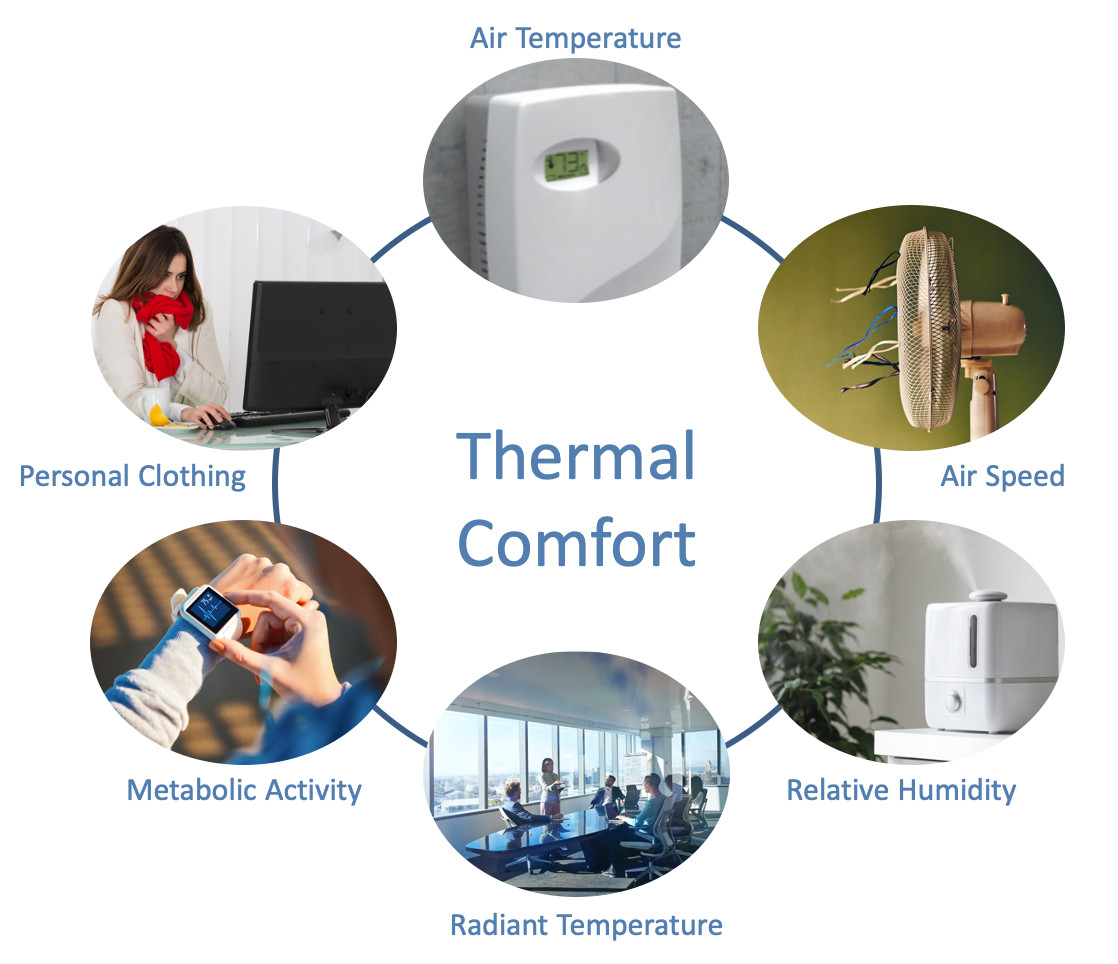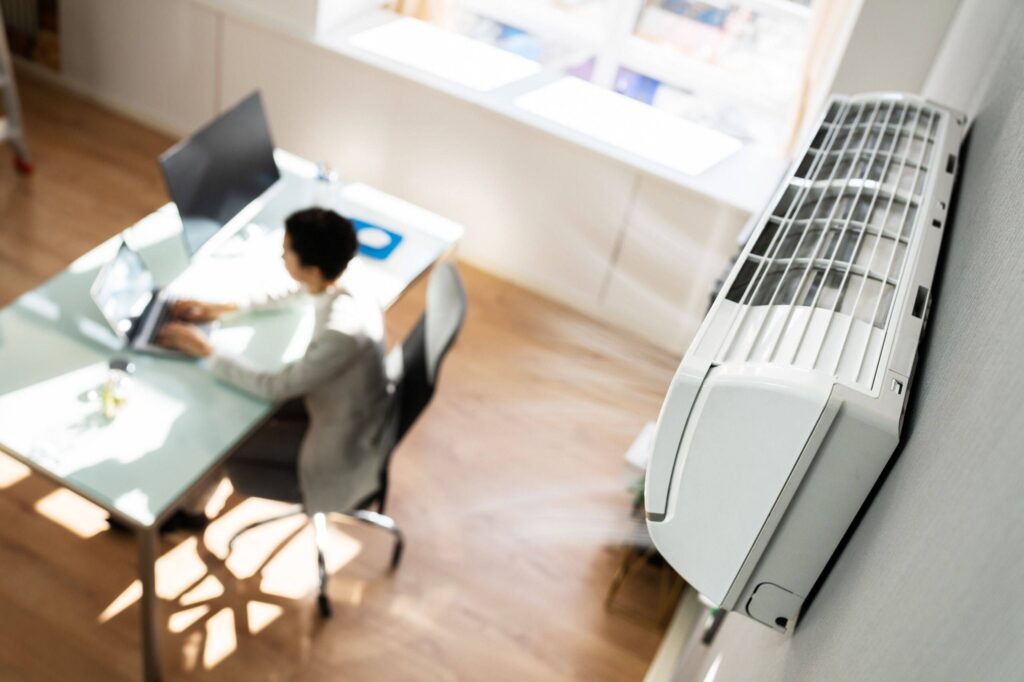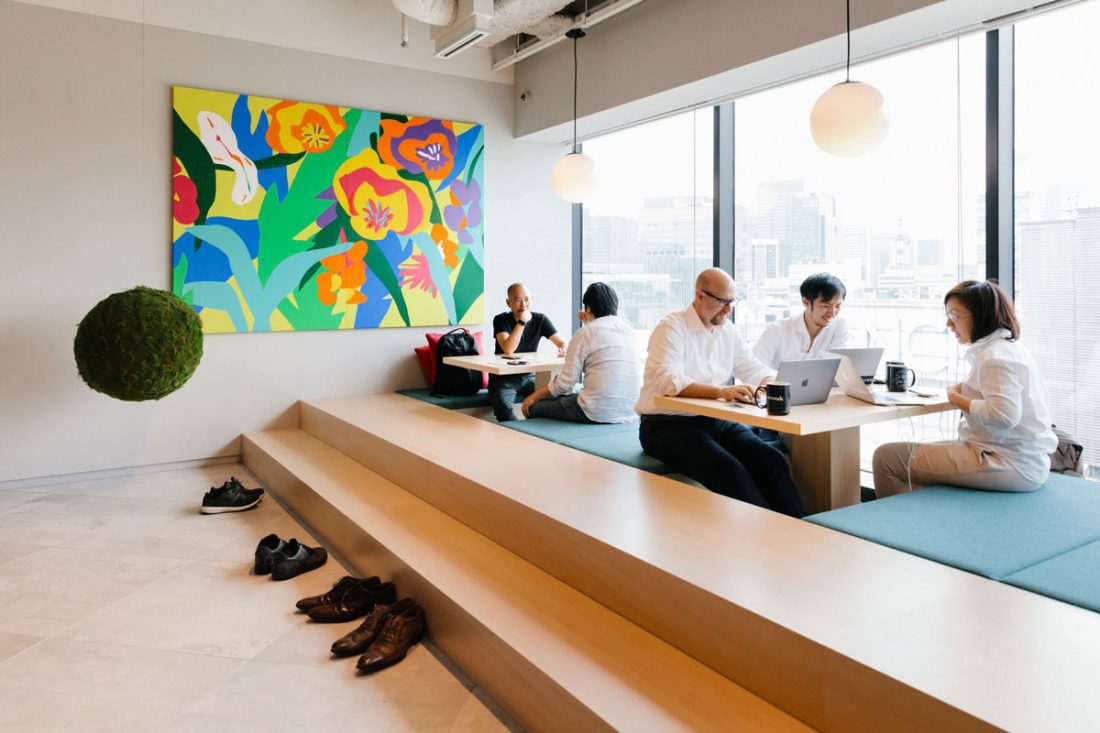Working In A Comfortable Environment With Enough Heat And Air
The biting wind howled outside, rattling the windows of the old textile mill. Inside, however, it was a different world. Humid air, thick with the scent of dye and the whir of machinery, used to be the defining characteristic, but not anymore. Now, a gentle warmth radiated from the energy-efficient radiators, and a modern ventilation system hummed quietly, filtering the air and maintaining a comfortable, consistent temperature.
This transformation, from a frigid and stuffy workspace to a haven of comfortable productivity, highlights a growing recognition of the profound impact that adequate heating and air conditioning have on worker wellbeing, morale, and ultimately, a company’s bottom line. It's not simply about luxury; it's about fundamental human needs and smart business practices.
For generations, the narrative of industrial labor often involved sacrificing comfort for output. The iconic image of the soot-stained worker, enduring harsh conditions for a meager wage, was almost romanticized. But this outdated paradigm is increasingly being challenged by data and a renewed focus on human-centered design in the workplace.
Consider the impact of temperature on cognitive function. Studies have shown that extreme temperatures, both hot and cold, can impair concentration, memory, and decision-making abilities. According to a study by Cornell University, optimizing office temperature can lead to a 3-5% improvement in productivity and a reduction in errors.
This may seem negligible, but when scaled across an entire workforce, the cumulative effect is substantial. Imagine a call center where operators are constantly fielding customer inquiries. If those operators are struggling to focus due to sweltering heat, the quality of their interactions suffers, leading to customer dissatisfaction and potential revenue loss.
Conversely, a comfortable and regulated environment allows employees to focus on their tasks, collaborate effectively, and perform at their best. It fosters a sense of respect and value, signaling to employees that their wellbeing is a priority.
The implications extend beyond cognitive function. Exposure to extreme temperatures can also have significant physical health consequences. Prolonged exposure to cold can increase the risk of hypothermia, frostbite, and exacerbation of existing respiratory conditions.
Similarly, working in excessive heat can lead to heatstroke, dehydration, and fatigue. These conditions not only impact individual employees but also contribute to increased absenteeism and healthcare costs for the company. OSHA (Occupational Safety and Health Administration) sets guidelines for workplace temperature and ventilation to protect workers from these hazards.
The shift towards comfortable and well-ventilated workspaces is particularly evident in industries that have traditionally been associated with challenging conditions. Construction, manufacturing, and agriculture are actively seeking innovative solutions to mitigate the impact of weather on worker wellbeing.
For example, many construction sites are now equipped with cooling tents or misting systems during hot weather. Agricultural workers are provided with regular breaks in shaded areas and access to hydration. Factories are investing in advanced ventilation systems and climate control technologies.
The adoption of these measures is not simply a matter of compliance with safety regulations. It's a strategic investment in human capital. Companies are realizing that by prioritizing the health and wellbeing of their employees, they can attract and retain top talent, boost productivity, and reduce the costs associated with absenteeism and turnover.
However, implementing effective heating and air conditioning solutions is not always straightforward. The specific needs of a workplace vary depending on factors such as the type of industry, the building's design, and the local climate.
In older buildings, for instance, retrofitting HVAC systems can be a complex and expensive undertaking. Careful consideration must be given to energy efficiency, sustainability, and the potential impact on the building's structure.
Furthermore, it's crucial to involve employees in the decision-making process. Their feedback can provide valuable insights into the specific challenges they face and help ensure that the chosen solutions are tailored to their needs.
Beyond the practical considerations, there is a fundamental ethical dimension to this issue. Every worker deserves to be treated with dignity and respect, and that includes providing a safe and comfortable working environment. Creating such an environment is not simply a matter of compliance or cost-benefit analysis; it’s a reflection of a company's values and its commitment to its employees.
The benefits of providing adequate heating and air conditioning extend beyond the individual workplace. It can also have a positive impact on the broader community. For example, reducing energy consumption through the adoption of energy-efficient HVAC systems can contribute to a more sustainable environment.
Furthermore, promoting worker wellbeing can help reduce healthcare costs and improve overall public health. Companies that prioritize the health and safety of their employees are more likely to be seen as responsible corporate citizens, enhancing their reputation and attracting socially conscious consumers.
The transformation of the textile mill is a testament to the power of innovation and a changing mindset. It is a story that highlights the importance of embracing a human-centered approach to workplace design and prioritizing the wellbeing of employees.
It’s a recognition that a comfortable and well-ventilated environment is not a luxury but a fundamental requirement for a productive, engaged, and healthy workforce. It's an investment in people, in productivity, and in a more sustainable future.
The soft hum of the ventilation system is now more than just a background noise. It’s the sound of progress, the whisper of respect, and a gentle reminder that investing in our employees is always a sound strategy. The warmth felt is not just from the radiators, but from a company valuing its people.













.png)




